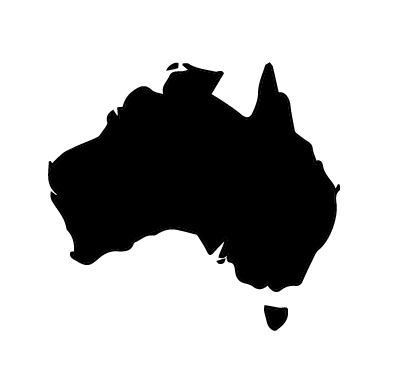How to safely interact with other road users in remote areas:
Effective communication is essential when exploring remote areas and embarking on off-road adventures. In Australia, where many of the best off-road and off-grid destinations are located, UHF radios are an essential tool for staying in touch with other drivers, road users, and emergency services. In this article, we'll explore the best practices for communicating on the road, including how to use UHF radios to communicate effectively with other drivers, trucks and road trains, and emergency services. By following these tips, you can help to ensure a safe and enjoyable journey on Australia's remote roads and experience the beauty and excitement of the country's most hidden and spectacular spots.
When to Use UHF Radios:
- When traveling in a convoy or group, UHF radios are an effective way to communicate with other drivers to coordinate stops, share information on road conditions, and ensure that everyone is aware of each other's locations.
- In emergency situations, UHF radios can be used to contact emergency services or other drivers for assistance.
How to Use UHF Radios:
- Before setting off on your trip, ensure that your UHF radio is charged and programmed with the appropriate channels and frequencies for your area.
- To communicate with other drivers, first check that you are on the same channel and that your radios are set to the same privacy or interference elimination code (if applicable).
- To initiate a conversation, start with a call signal or a "break, break" message to get the attention of other drivers.
- When communicating, keep your messages short and clear to avoid confusion or misinterpretation.
- If you are traveling in a convoy or group, it is important to establish a protocol for communication to avoid confusion or overlapping conversations.
When traveling on unsealed dusty roads in Australia, it's important to communicate effectively with trucks and road trains to avoid accidents and ensure a smooth journey. Here are some tips for using UHF radios when communicating with these larger vehicles:
1. Identify the channel: Before communicating with trucks and road trains, make sure you are on the appropriate UHF channel. Commonly used channels for road trains and trucks are 40 and 18.
2. Use appropriate communication etiquette: When communicating with truck drivers, it's important to use appropriate communication etiquette, such as addressing the driver by their vehicle type or number plate, and keeping messages short and clear.
3. Be aware of the wind direction: On unsealed dusty roads, dust can quickly become a visibility hazard, especially when trucks or road trains are passing by. When communicating with trucks or road trains, be aware of the wind direction and avoid positioning yourself downwind to minimize the amount of dust that will affect your visibility.
4. Use your hazard lights: When driving on dusty roads, it's common practice to turn on your hazard lights to indicate to other drivers that you are approaching, especially in situations where visibility is reduced. This can also be helpful when communicating with trucks or road trains, as it will alert them to your presence on the road.
5. Give way to larger vehicles: When sharing the road with trucks and road trains, it's important to give way to these larger vehicles to avoid accidents. If you need to pull over to allow a truck or road train to pass, use your UHF radio to communicate your intentions and let them know when it's safe to pass.
By following these tips and using UHF radios effectively, you can help to ensure a safe and enjoyable journey on unsealed dusty roads in Australia, even when sharing the road with larger vehicles.
It's important to note that UHF radios should be used responsibly and only for essential communication. Avoid using radios to chat unnecessarily or to play music, as this can cause interference and disrupt other drivers' use of the channel.
In addition, it's important to be aware of the legal requirements for UHF radio use in Australia, including the requirement for a license to use certain channels and frequencies. Check the Australian Communications and Media Authority (ACMA) website for more information on UHF radio regulations.
By using UHF radios responsibly and effectively, you can help to ensure a safe and enjoyable journey on remote roads in Australia.
What is the right UHF :
When buying a UHF radio for driving in remote areas, it's important to consider the range you'll need. The range of a UHF radio depends on a variety of factors, including the terrain and topography of the area you'll be traveling in, the quality of the radio, and the type of antenna you're using. For off-road adventures in Australia, a UHF radio with a range of at least 5-10 kilometers should be sufficient for most situations. However, if you're planning to travel through particularly rugged or mountainous terrain, you may need a UHF radio with a longer range to ensure reliable communication. It's also important to keep in mind that the range of a UHF radio can be affected by environmental factors, such as weather conditions and the presence of other radio signals, so it's always a good idea to test your radio in different conditions before embarking on a long journey.
If you're interested in learning more about UHF radios and their use in remote and mountainous areas, there are a number of resources available that can help. Here are a few to consider:
1. The Australian Communications and Media Authority (ACMA) provides a range of information and resources on UHF radios and their use in Australia. Their website includes details on licensing requirements, radio frequency allocations, and best practices for radio use.
2. The Australian Radio Communications Industry Association (ARCIA) is a not-for-profit organization that represents the radio communications industry in Australia. They offer a range of resources for UHF radio users, including information on radio technologies, standards, and regulations.
3. The 4WD and Adventure Show is an annual event held in several locations around Australia, featuring exhibits and demonstrations on all things related to off-road travel and adventure. The show often includes presentations and demonstrations on UHF radios and their use in remote and mountainous areas.
4. Online forums and social media groups can also be a useful resource for learning about UHF radios and their use in specific areas. These groups provide an opportunity to connect with other off-road enthusiasts and share tips and advice on radio use and other aspects of off-road travel.
By taking advantage of these resources, you can learn more about UHF radios and their use in remote and mountainous areas, and ensure that you're prepared for a safe and enjoyable off-road adventure.

